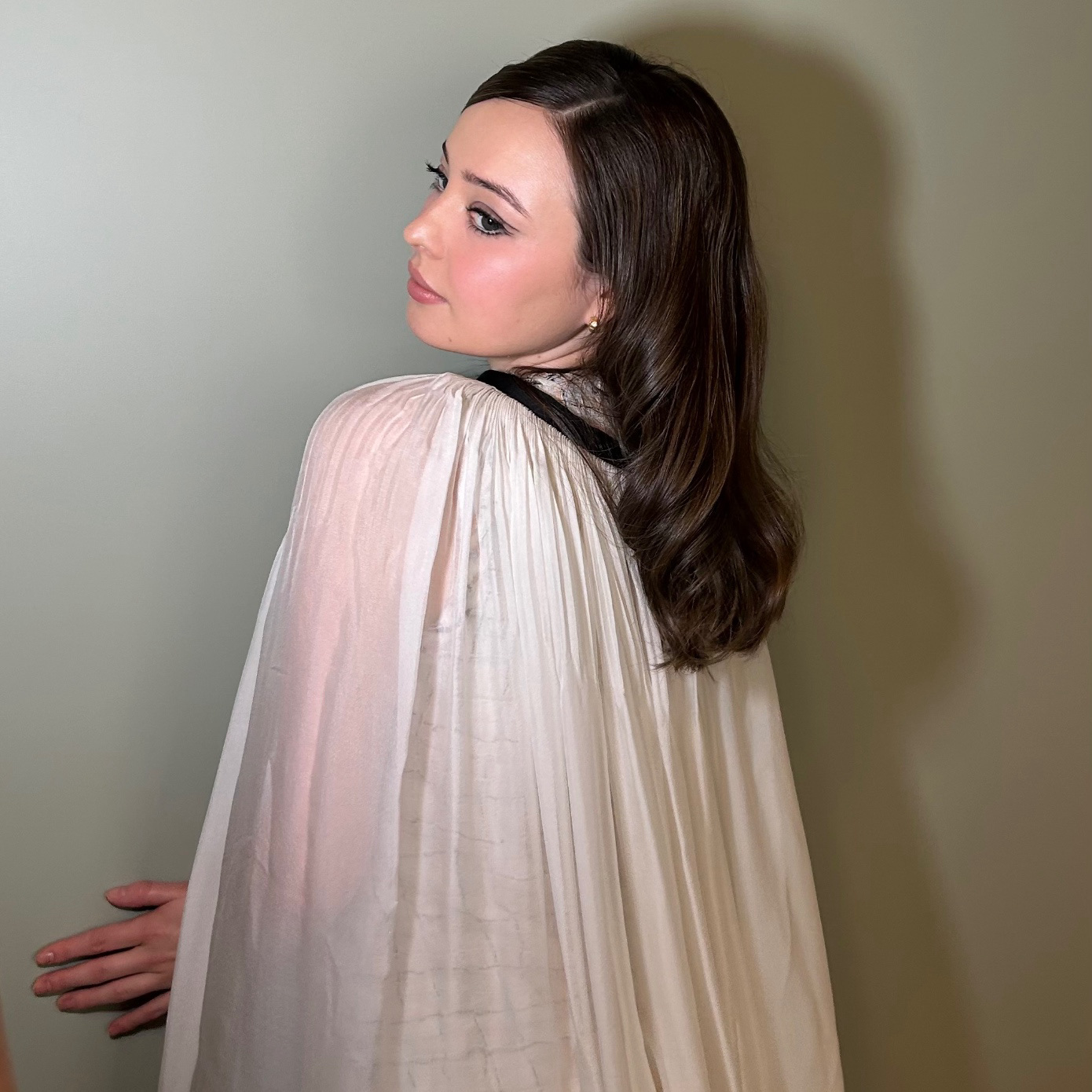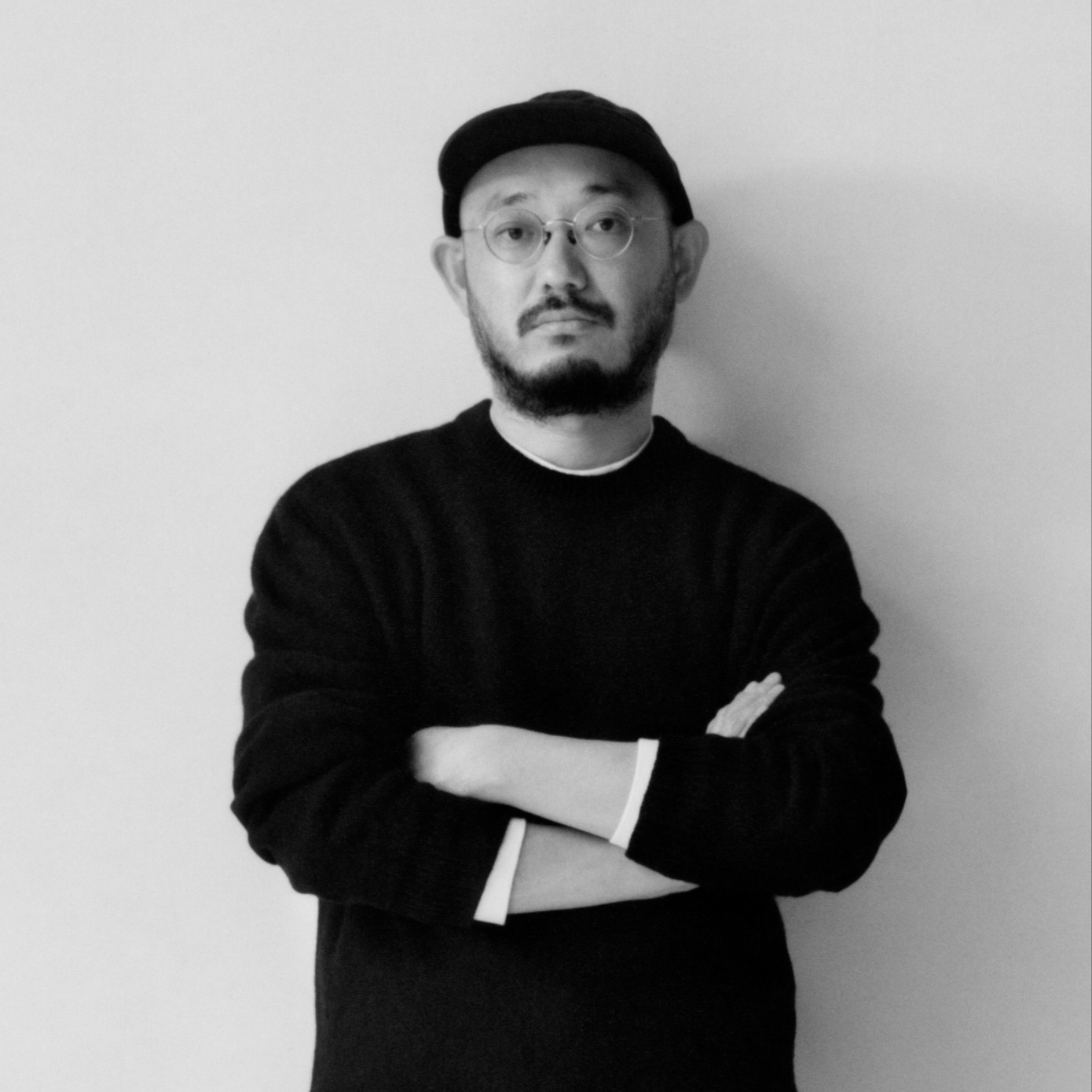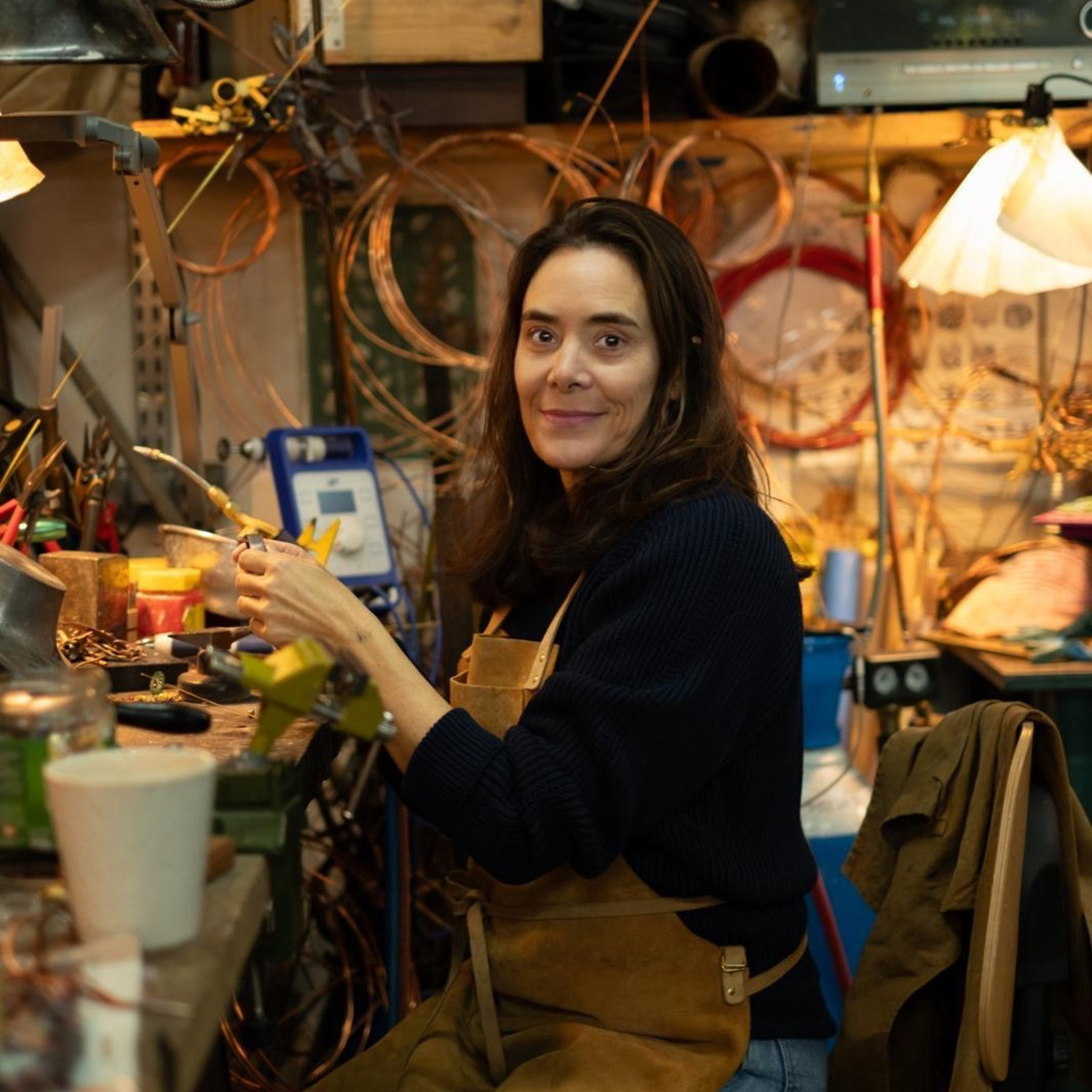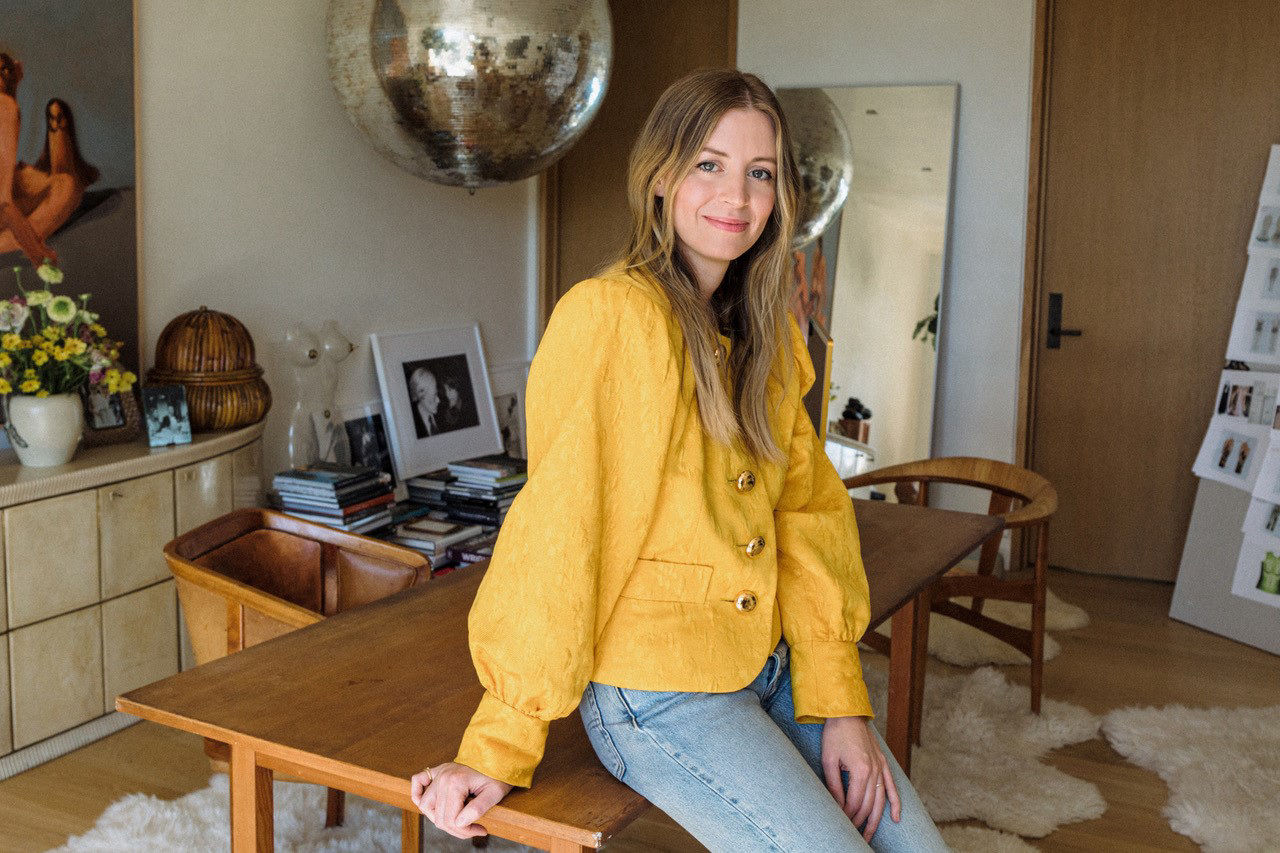
Lizzie Grover Rad is changing fashion as we know it. The Los Angeles-based designer and collector, who was previously featured in CULTURED’s Young Collectors 2020, makes works at the crux of contemporary social issues, art historical references, and cutting-edge design. How does she do it? When an idea comes to her head, she has to see it through. Recently diagnosed with ADHD, Grover Rad has been rethinking how she thinks, and it's evident in her new designs.
Her latest Grover Rad collection, Nip Tuck, focuses on the implementation of plastic surgery as body modification, and as a reflection of beauty standards for women. The set includes artworks made in collaboration with contemporary artist Mark Verabioff, and cites older works, including renderings of the Fountain of Youth and 19th-century paintings. Grover Rad is doing something revolutionary with her clothes—bringing conversations about beauty standards, historical and contemporary, to the forefront of design.
CULTURED: What inspires you to think about fashion and the way that it can produce cultural critique?
Lizzie Grover Rad: I love the research aspect that I do for each collection, and going back in time. Looking at the early stories of plastic surgery, obviously there were good intentions, and even throughout time there's been good use and good application of plastic surgery. I think it isn't until recent years, with social media and the easy access and the affordability … what's alarming is the trendiness of it. It is very far away from its early intention. I thought that was an interesting progression, to show the history through however many thousands of years, from those medieval drawings all the way to the Mad Men era and the misogynistic ads. I think that's part of the intrigue for me, the historical component.
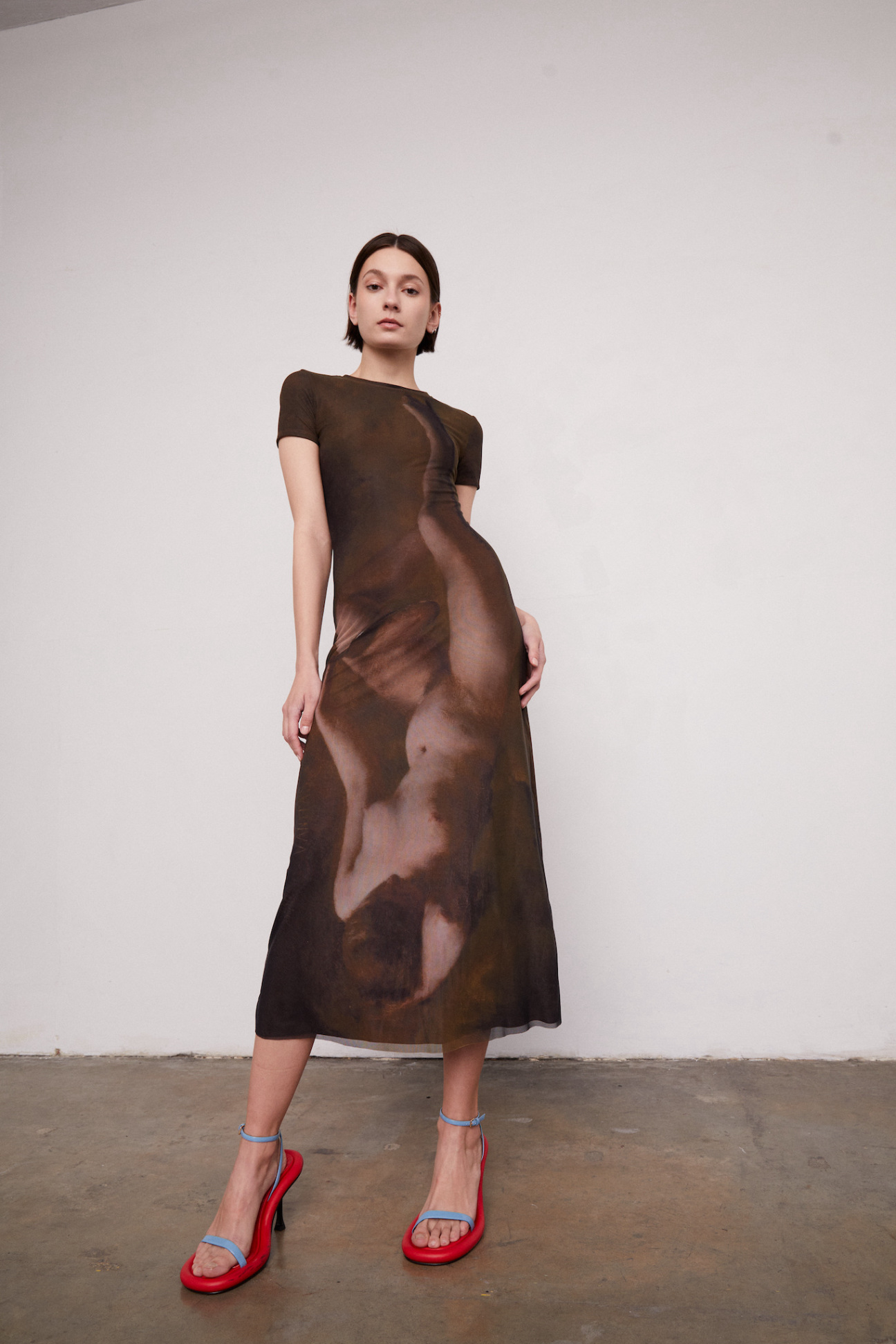
CULTURED: Do you see yourself as leading the implementation of feminist conversations into the clothing market?
Grover Rad: I think that the conversation is already happening. It's such a big part of what I feel like I'm hearing, especially for a lot of my friends who are mothers and have teenage daughters. I'm just adding my two cents, and I think maybe where the conversation hasn't been had is on clothing, with garments that start conversations. An interesting way to show what you stand for and put your money where your mouth is is [to] donate. We've been hosting trunk shows and giving a portion of the proceeds to different organizations. Hopefully those kinds of gestures can help move the needle and not just talk about it.
CULTURED: You've been able to include such a diverse set of styles in Nip Tuck. How do you decide what does or doesn’t go into a collection?
Grover Rad: It's an evolving process. I'd like to have a wide breadth of mediums. Highlighting the differences is what's interesting to me. Having the oil paintings, contemporary art photographs, the graphic wording, the wide range is what excites me—pairing them together in an unexpected way. Not that I try to tick each box for each collection, but I definitely try to get something as wide [as I can]. Through the design process, I keep researching, and a lot of things get dropped throughout the way as I find more interesting pieces. But I like that. Different mediums are my target.
CULTURED: You have a background in architecture and interior design. Do you see how we style our clothes as in dialogue with the way that we decorate and design our personal spaces?
Grover Rad: Absolutely. I think both are an expression and a reflection of us, even though people think about houses and the way they dress differently. I was very excited to switch from interiors to fashion. Because of the way people think about it, there's a bit more pressure, longevity, and expense to interiors that for me, kind of stifled creativity. It was quite freeing to move to fashion. In some ways, there's a lot of overlap and in some ways it's so different. People look at the way they dress as their sense of expression; their homes are kind of like a refuge.
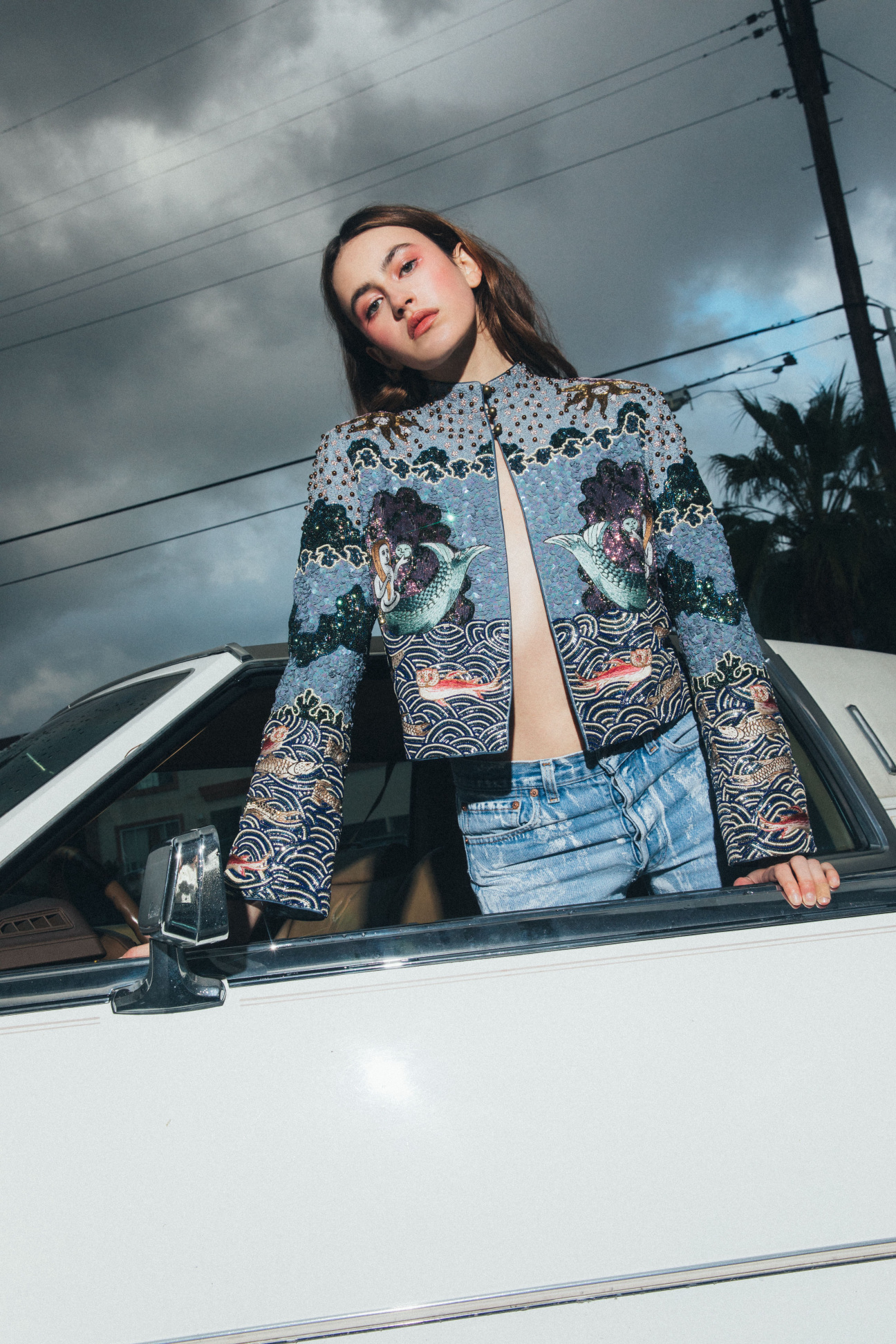
CULTURED: Our closets are an extension of ourselves?
Grover Rad: 100 percent. I don't know the science behind how to explain this, but the information that you're giving off in the way that you're dressed is how we subconsciously read people. It's incredibly important in terms of how people interpret you.
CULTURED: What sparks your thinking about your collections initially?
Grover Rad: I do think that it actually is my ADHD and spacing out thinking about things. It's generally about problems that are going on in society. I'll read something or see a TikTok video and store it away and noodle over certain things. Whatever I seem to be noodling over the most … is how I typically run with it. If I find myself becoming obsessed with thinking about a problem, then that's how I choose it.
Clearly, if I'm obsessed with it, I'm sure there's other people obsessing about it. I'm not trying to be trendy or necessarily hit things at the right time, but it's hitting breaking point patterns in advance, like choosing reproductive rights for the first collection and seeing that breaking before our eyes. There are warning signs in these things picking up. It starts chipping away at me and makes me think. I store them away until it adds up to something that I think really needs to be focused on or I want to give my focus to.

